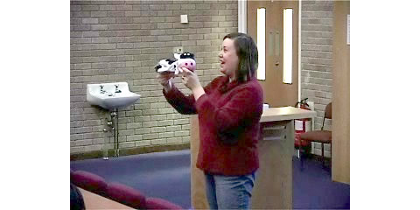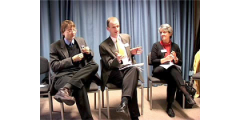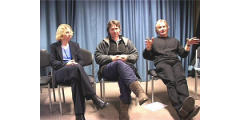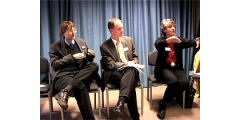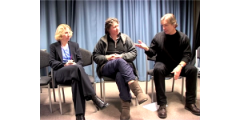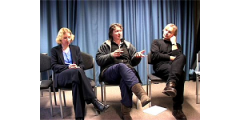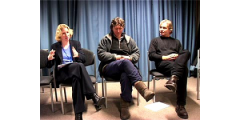Real life examples give context to learning in the lecture
June 9, 2004
Video >> Liz Sockett: “A lot of the diseases earlier in the course, bacterial diseases, we would stop and talk, for a couple of minutes, about. For example, ‘Who has had a sore throat?’ We actually monitor symptoms on the registers. So as the students are sitting in the lecture they are filling in a …
How “small” is a “small group”?
January 31, 2004
Michael Humphreys:”I don’t think there is a critical size for a small group. We have tutorials with 20 to 25 per tutorial but I don’t see that as a small group. “For me a group of between 4 and 10 is about right for small group teaching, depending on the nature of the task.” …
If lecturing is a performance, how do you prepare?
January 8, 2004
Video >> Christopher Barnatt: “A lot of people tend to think that you prepare a lecture by looking at the content and looking at the actual slides etc. When you think about a large group in particular, you have to think that there’s the content and there’s actually the delivery, or the performance of it. …
Managing the personal side of small group teaching
Video >> Pam: “You have to draw distinctions very much between the teacher and the assessor, and I think all of us have to change hats from time to time. You want to be supportive, you want to be encouraging you have to understand that somebody is having a bad day, that other things are …
How can you accommodate diversity in a large group?
Video >> Wyn Morgan: “It’s a question of trying to find a balance between scaring the ones who’ve never done it before and not boring the ones who’ve got some experience with it. I think you have to remember what you’re trying to achieve in that particular class in terms of content or knowledge or whatever …
How do you ensure everyone’s participating in practicals?
Video >> Chris: “Well that is something we have lots of experience with. I’ll start with this one. We run a lot of group projects and almost always get somebody who is self evidently not pulling their weight. “Now there are a number of ways you can deal with that. One way is that peer …
How do you keep your audience’s attention?
Video >> Mary: “I think this is a really important point. You said “how do you keep the audience’s attention for 50 minutes?”, I think you’ll be lucky if you keep them for about 10-12 minutes before people start to have microsleeps . They are lucky if they last that long. “I think it’s as much …
Assessing practical work
Video >> Audience: “I take your point about a group project being individually marked and who didn’t really pull their weight and who didn’t comprehend it. However it still allows students to just latch on to groups and come out with the data. When I mark a project I can only mark what they submitted. …
The future of practicals with increasing numbers
Video >> Kathy Simmons: “Like you say, it’s just a comment really. It is a problem; it means that we need to evaluate quite carefully what we are doing with the practical work we do. Whereas before it might have been easy to put a piece of practical work into the course or a module …
Key points in practical teaching
Video >> Kathy: “I have got two actually and they are more applicable for this sort of afternoon-type lab work which is the sort of work we would do most in engineering. The first thing I would say is make sure the mechanics of what you are asking the students to do does not obscure …

